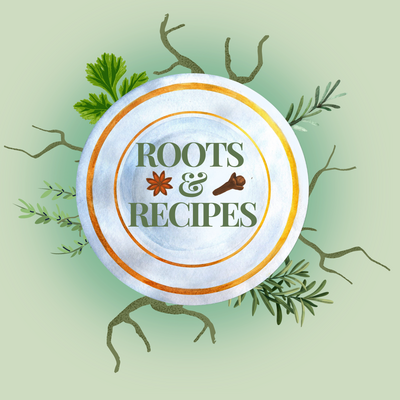
The Roots and Recipes culinary program in collaboration with the Queen's University International Centre (QUIC) provides students with meals that are healthy and affordable, while also introducing/reuniting them with culinary traditions from all over the world.
The recipes used for the meal kits and cooking classes are taken from the QUIC cookbook, which provides students with convenient and affordable recipes that are nutritious, delicious, and easy to make while juggling education and extra-curriculars.
The meal kits also aim to address the lack of walkable and financially accessible international grocery stores in Kingston by providing students with all the ingredients they need to make a meal right here on campus. This programming series will make it easier for students to cook their own cultural foods and explore other culinary traditions.
Roots and Recipes also aims to educate students about the origins (Cultural roots) of the dishes featured. The program hopes to showcase the cultures of colonized nations, because their histories are often neglected or not treated as important.
SEPTEMBER'S RECIPE: THAI RED CURRY
Tracing back the cultural roots of Red Thai Curry show us how cultural exchange and trade were happening without colonization. Thailand is the only southeast Asian country that was not under formal colonial rule, which means that a lot of cooking techniques and practices were relatively unchanged, this does not mean that Thai cuisine is devoid of influence as ingredients and cooking styles were introduced by surrounding trading countries. Red Thai Curry represents the long and rich Thai history that consists of trade and learning and sharing from other countries. Thai Red Curry gets its spice from Portuguese chilies that were bought to the country by Portuguese missionaries in the 16th century, the name curry comes from the Tamil word Kari, which means sauce for rice. Neighbouring countries like Malaysia, China, and India shared spices like lemongrass, cumin, shallots, and tamarind. The dish not only represents Thai culture, but it also represents how interconnected the world has always been. Red Thai Curry and other dishes from the cuisine became well known around the world in 2002, when the Thai government launched a campaign to promote Thai food and restaurants at a global scale, Thai restaurants all over this world took part in this campaign, adopting the menus provided by the Thai government, these menus standardized Thai curries into red, yellow, and green. Though this initiative was successful in making Thai food popular, it flattened Thai cuisine and culture to be more palatable to a wider audience. Including Thai Red Curry in the Roots and Recipes series was a way to delve in deeper into the cultural contexts around this dish, it was a way to showcase the complexities of Thai culture, history, and food.
FACTS AND HISTORY OF RED CURRY
-
Curry comes from the Tamil word Kari, which translates to sauce for rice.
-
Thailand is the only southeast Asian country that was not under formal colonial rule, this means that the cooking practices are relativity unchanged by European colonial rule. This does not mean that Thai cuisine was completely uninfluenced, new cooking styles and ingredients were introduced by surrounding trading countries and Portuguese and Buddhist missionaries.
-
Influenced by Indian, Chinese, Portuguese, and Malaysian culinary customs.
-
The 4th century bought Indian traders and Buddhist missionaries to Thailand, they shared aromatics, spices, and herbs like tamarind, cumin, shallots, and lemongrass. These ingredients got incorporated into Thai dishes and spread all over the country.
-
During the 13th century, Thai people started cooking with Nam Prik, which is a thick paste made from varying ingredients like lemongrass, fish sauce, peppercorns, and tamarind.
-
This paste is used in many dishes, including Thai red curry.
-
Somewhere between the 14th and 18th century shrimp paste was added to this dish and gives it an umami favour.
-
Portuguese merchants came to Thailand in the 16th century and bought with them hot chilies that gave the curry a spicy kick.
-
In 2002, the Thai government launched a gastrodiplomacy campaign that wanted to globally promote Thai restaurants and flavours. Restaurants adopted the menus provided by the Thai government, with standardized Thai curries — red, yellow, and green.
-
This initiative was successful in promoting Thai food but also flattened Thai cuisines and culture.
-
So, lets learn about this cuisine and explore different flavours and the stories they bring.
 Student Affairs
Student Affairs